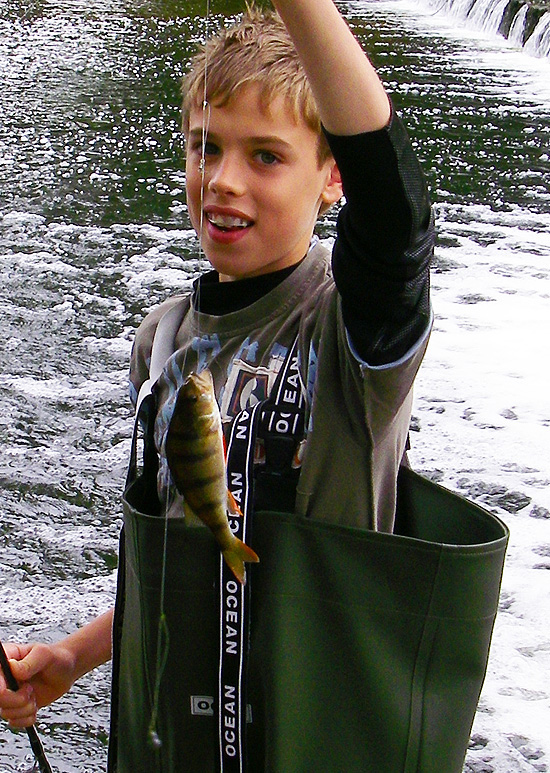 '
'Information Page.
Circle hooks - good and bad.
Regular readers of the blog will be aware that I think circle hooks are wonderful when it comes to catch and release fishing. I use them widely for all sorts of bait fishing these days with considerable success. This week I had two more opportunities to give these hooks an airing when I took two of my grandsons fishing. The results were mixed in one case and spectacularly good in the second so here's the story.
Young Ben is a pretty experienced angler these days and when he came round to spend the day with us I decided to take him for a session after perch. We went to a local river and the first job was to catch some minnows for bait. I had made a couple of minnow traps out of old Coke bottles with the tops cut off and inverted. We also took along a drop net and my old landing net. I think we enjoyed catching the minnows more than the subsequent perch fishing but anyway the result of our efforts seemed to show that the best way to catch minnows was simply to submerge my big landing net in the shallows and for one of us to chase the minnows over it while the other waited to lift it it the critical instant. The traps caught a few but they were mixed sizes and the drop net was just too slow to lift for it to be very effective.
Anyway, we managed to catch some dozens of decent sized baits and set about fishing for the perch. We only used one rod and Ben did most of the fishing. It was virtually a fish a drop and as soon as our paternostered minnow, lip hooked on a circle hook (about size 6), hit the bottom there was usually a bite. Most of the bites were hooked simply by reeling slowly in until the weight of the perch could be felt. None of the perch were very big, the best perhaps 3/4lb, but Ben caught dozens. While most of the fish were lip hooked we did have several that needed me to intervene for hook removals. Disappointing!
A few days after the perching I had another visit from Ben but this time my eldest grandson, James, also came to stay. In anticipation of the visit I'd bought a couple of dozen ragworm in order to take the lads wrasse fishing. Unlike Ben (and although he is a couple of years older), James has done hardly any fishing so a catch was essential. The gear was the same as our perch tackle, size 6 circle hooks on light paternosters, this time baited with bits of ragworm. Despite what I have been told by some anglers we had no problem baiting the circles with worm, it was just a matter of working the bait round the hook with a little care. Bites were fast and furious and in a couple of hours fishing from the gravel beach at Worbarrow the lads landed fifty two fish between them. Again, none of the wrasse were of great size - perhaps a pound-and-a-bit was the biggest. Using a similar technique to the perch fishing - slowly reeling until the weight of the fish was felt - they had three species - ballan, corkwing and rock cook, but the really impressive thing was that EVERY ONE OF THE 52 FISH WAS LIP HOOKED! Definitely worth another try.
If you have any comments or questions about fish, methods, tactics or 'what have you.'get in touch with me by sending an E-MAIL to - docladle@hotmail.com
Ben perch fishing.
 '
'Lip hooked.
 '
'Scissors.
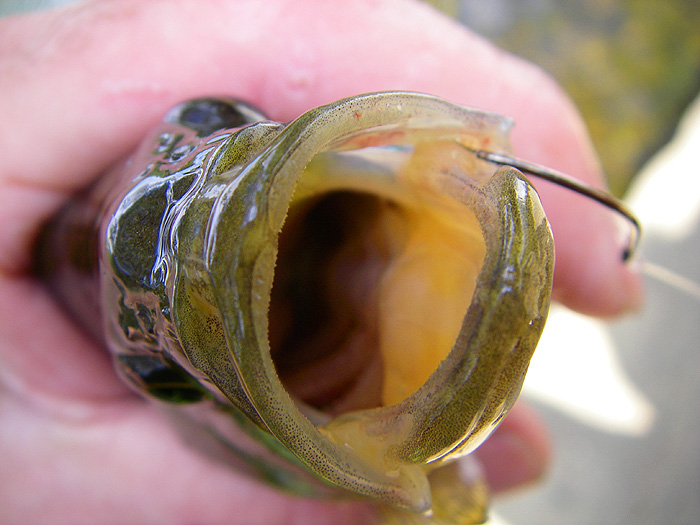 '
'Wrassers.
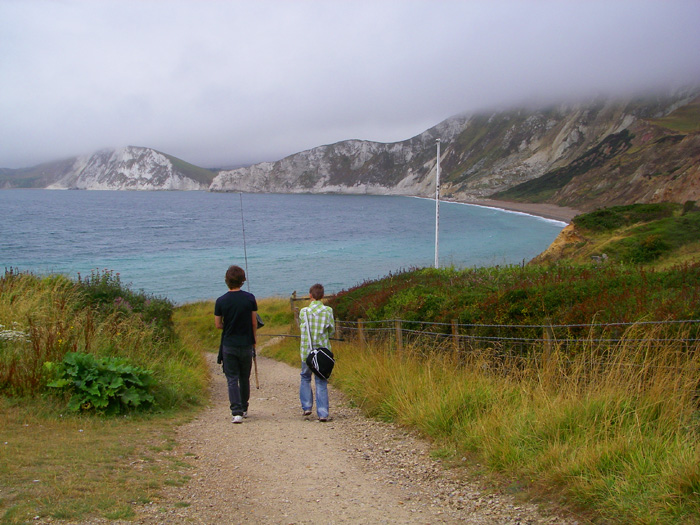 '
'First fish.
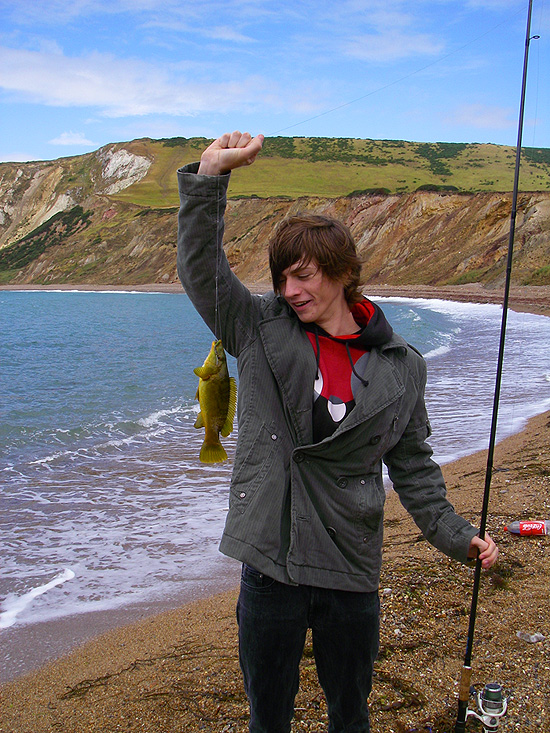 '
'One for Ben.
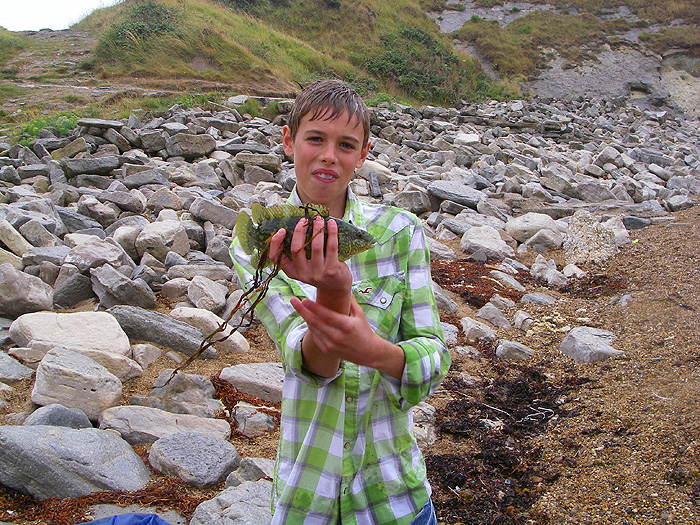 '
'Typical.
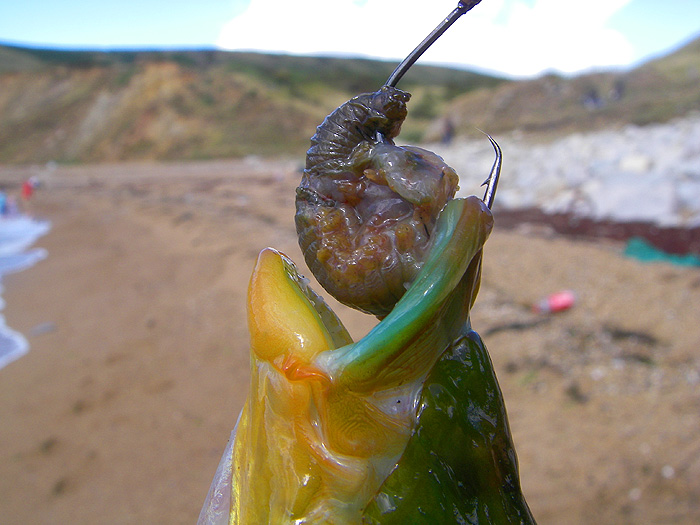 '
'